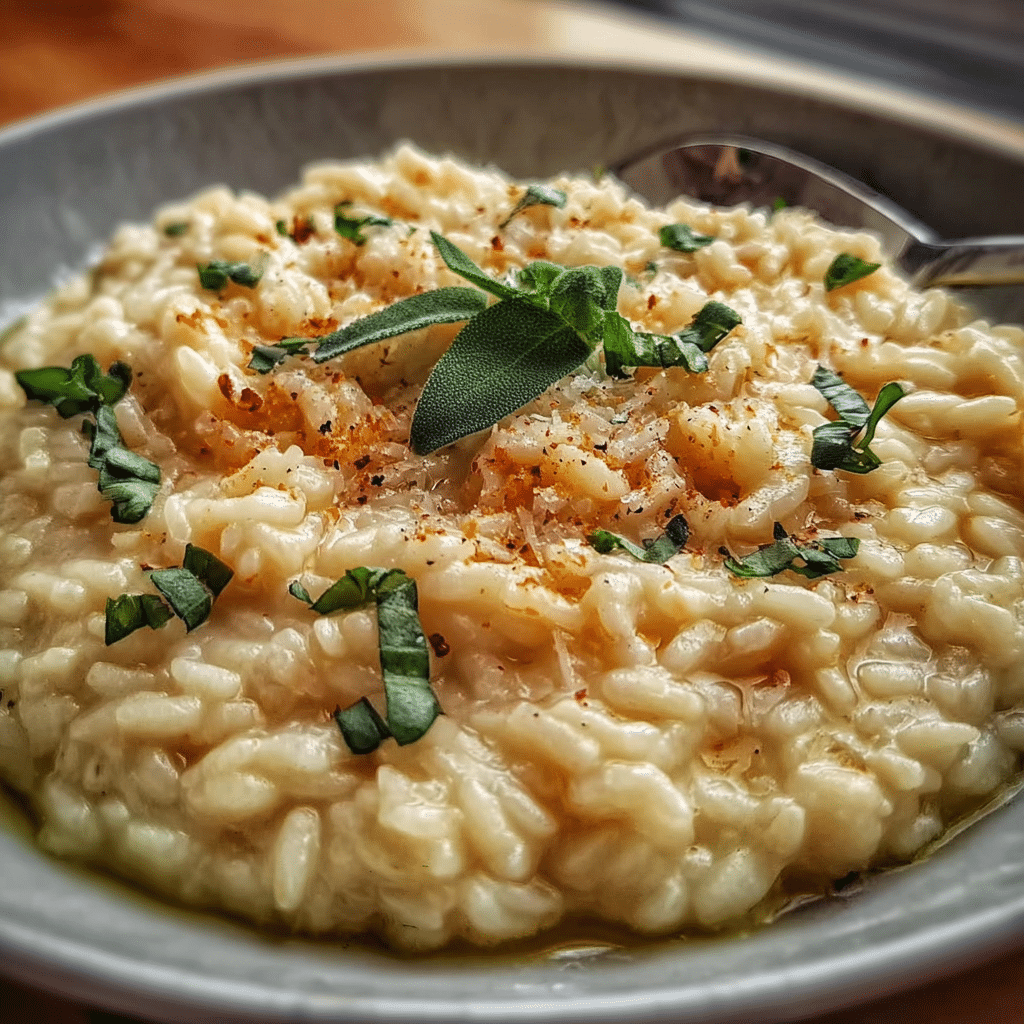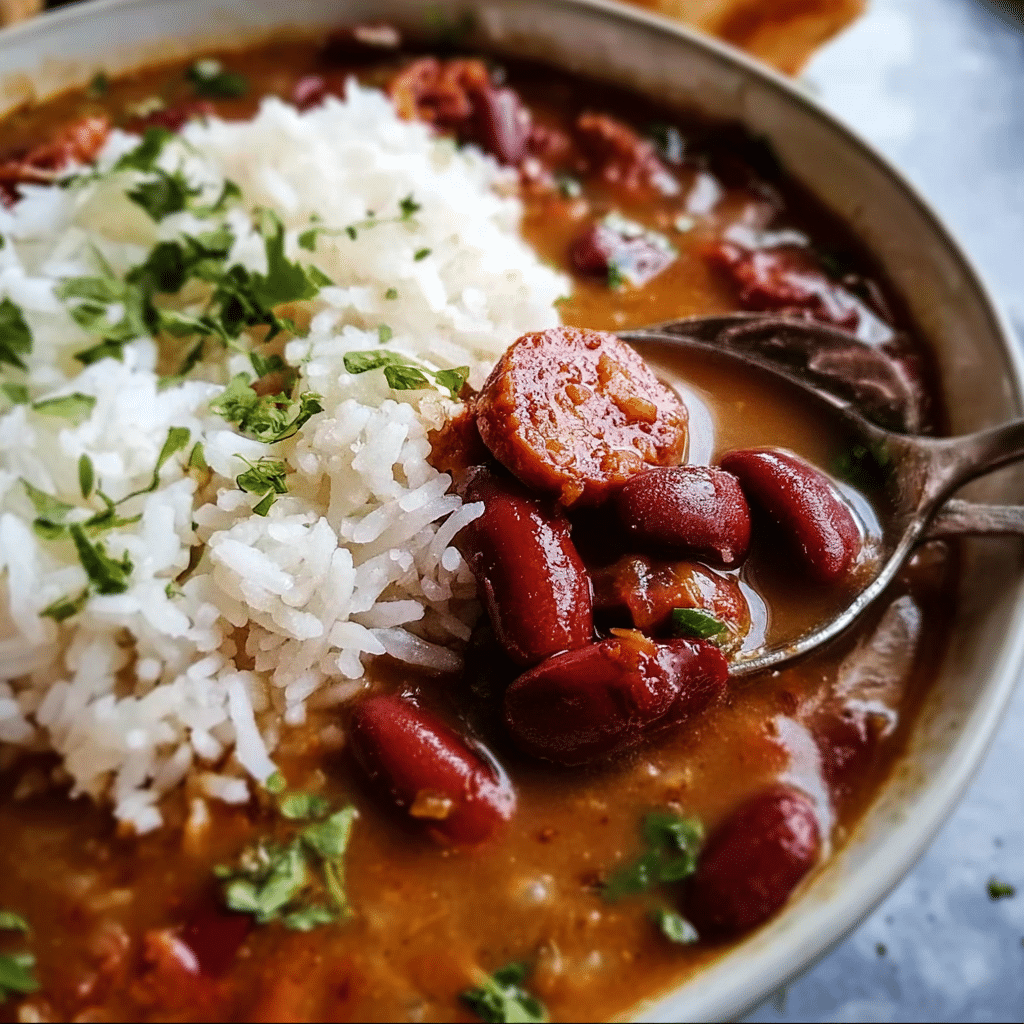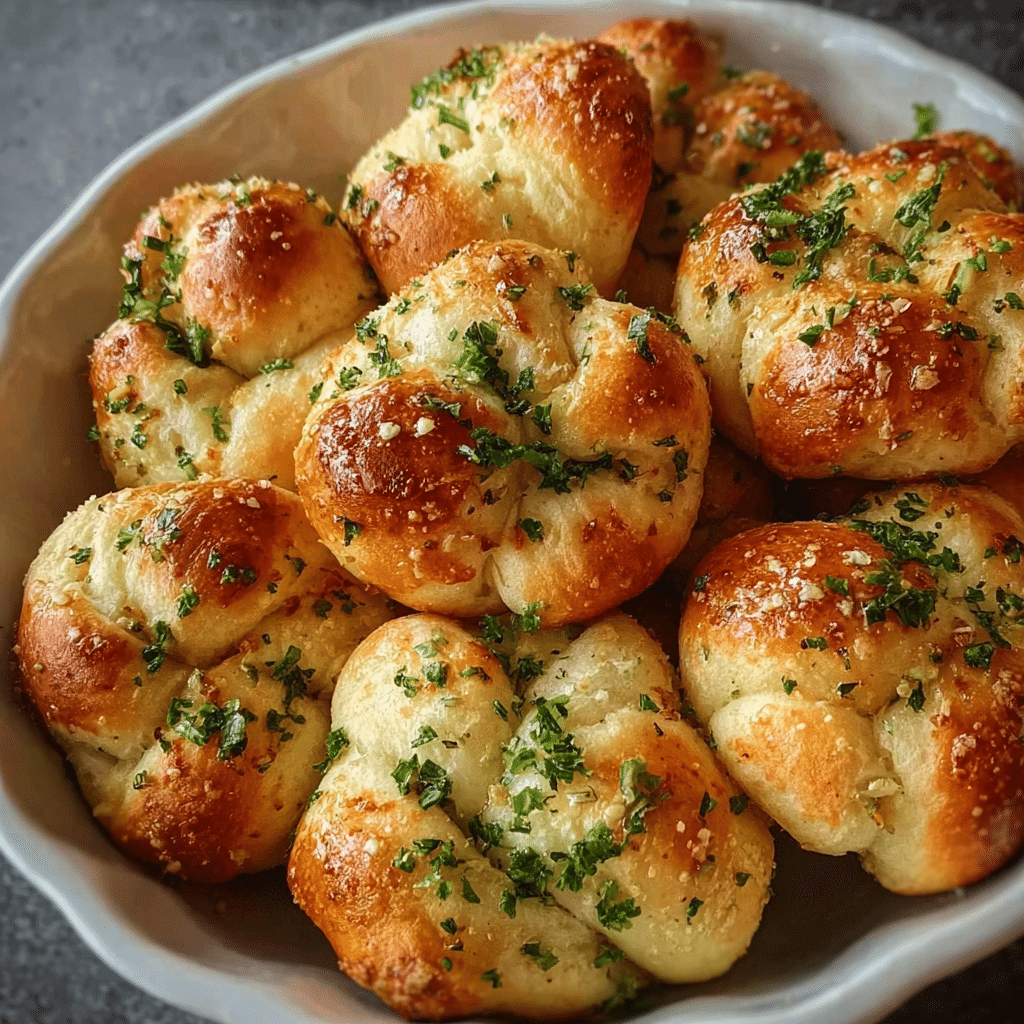Autumnal pumpkin shakshuka is not just a dish; it’s an experience that captures the essence of the fall season. I still remember the first time I stumbled upon this vibrant and hearty meal. It was a chilly October afternoon, and I had just returned from a local farmer’s market, my bags filled with the season’s best produce. As I unpacked my haul, I caught sight of the pumpkins—small, bright orbs that practically begged to be transformed into something delicious. After some rummaging through my collection of recipes, I came across shakshuka, a North African and Middle Eastern favorite that traditionally features poached eggs in a spicy tomato sauce. But this time, I decided to give it a twist by incorporating pumpkin. And oh, how that decision changed my culinary world!

The moment I took that first bite, I was enveloped in a warm embrace of flavors. The creamy pumpkin blended seamlessly with the spices, while the eggs added a rich, comforting touch. It felt like a dish that was meant to be shared with loved ones, and indeed, it quickly became a family favorite. I started preparing autumnal pumpkin shakshuka every Sunday, inviting friends over for brunch. This dish became not just a meal but a ritual, a way to gather and celebrate the bounty of the season.
The Story Behind This Recipe
Shakshuka has deep roots, originating from Tunisia, and has since spread across various cultures, adapting to local tastes and ingredients. The traditional version is simple yet flavorful, usually made with tomatoes, peppers, and spices like cumin and paprika. However, as I delved deeper into the world of shakshuka, I realized that its versatility was its greatest strength. The dish has evolved into countless variations, and that’s where the beauty lies—every region adds its own flair, and I couldn’t resist putting my seasonal twist on it.
What sets autumnal pumpkin shakshuka apart from the traditional version is the addition of pumpkin, which not only enhances the dish’s nutritional profile but also adds a subtle sweetness that harmonizes beautifully with the spices. This recipe is perfect for busy families looking for quick dinner solutions, as it can be whipped up in under 30 minutes and is packed with flavor and nutrients. The vibrant colors of the dish are sure to brighten up any table, making it a feast for the eyes as well as the stomach.
As the temperatures drop and the leaves turn to shades of orange and gold, there’s something comforting about cooking with seasonal ingredients. Autumnal pumpkin shakshuka is a dish that encapsulates this seasonal change perfectly. It’s a reminder of cozy evenings spent at home, gathering around the table, and enjoying hearty meals with family and friends.
In this article, you will learn everything you need to know about making your own autumnal pumpkin shakshuka. From selecting the best pumpkins to the perfect spices that elevate the dish, I’ll guide you through the process step-by-step. You’ll also discover the history and cultural significance behind this beloved recipe as well as some tips and tricks to make your shakshuka truly shine.
The Rich History and Cultural Significance of autumnal pumpkin shakshuka
The rich history and cultural significance of autumnal pumpkin shakshuka are as layered as the flavors in the dish itself. Shakshuka, in its traditional form, has been a staple in North African cuisine for centuries, with roots tracing back to Tunisia. The name “shakshuka” itself is derived from the Arabic word “shakshouka,” meaning “a mixture.” The dish traditionally features poached eggs in a base of spiced tomato sauce, often accompanied by bread to soak up the delicious juices.
Origins and History
Historically, shakshuka was a humble dish, often prepared for breakfast or brunch in homes across North Africa. It was a way to utilize leftover vegetables, particularly ripe tomatoes and peppers, making it an economical and sustainable choice. Over time, the dish made its way to Israel, where it was embraced and adapted by various communities, each adding their own spin. The dish became a beloved part of Israeli cuisine, often found in cafes and restaurants and enjoyed by people from all walks of life.
As the dish traveled and evolved, so did its ingredients. While the classic tomato base remains a constant, many variations include bell peppers, onions, and spices like cumin, paprika, and harissa. My own version, the autumnal pumpkin shakshuka, is a celebration of fall’s bounty, swapping out traditional tomatoes for the sweet and earthy flavors of pumpkin. This adaptation not only enhances the dish’s taste but also expands its nutritional profile, offering a hearty serving of fiber and vitamins.
Cultural Significance
In many cultures, shakshuka is more than just a meal; it symbolizes home, comfort, and togetherness. It’s often served as a communal dish, with everyone sharing from the same pan, which fosters a sense of unity and connection. This communal aspect resonates deeply with me, as I recall many evenings spent with friends and family, gathering around the table, sharing stories, and savoring the delightful flavors of this dish. It’s a ritual that transcends cultural boundaries and speaks to the universal love of good food and company.
Traditionally, shakshuka is served at breakfast or brunch, but the autumnal pumpkin shakshuka breaks these conventions. Its hearty nature makes it a perfect dinner option, especially during the cooler months when you crave something warm and filling. It’s a dish that feels right at home in the context of family gatherings, festive occasions, or cozy weeknight dinners.
Nutritional Benefits
When it comes to nutrition, autumnal pumpkin shakshuka packs a punch. Pumpkin is a nutrient-dense ingredient, rich in vitamins A and C, potassium, and fiber. These nutrients contribute to overall health, supporting immune function, promoting eye health, and aiding in digestion. The addition of eggs not only adds protein but also provides essential fats and nutrients like choline, which is vital for brain health. Together, these ingredients create a balanced meal that is not only delicious but also nourishing.
With its rich history, cultural significance, and nutritional benefits, autumnal pumpkin shakshuka is more than just a recipe—it’s a celebration of flavors and traditions. As you embark on your journey to create this delightful dish, you’ll not only enjoy a delicious meal but also connect with the stories and cultures that have shaped it throughout history. Join me as we dive deeper into the world of shakshuka, exploring its many facets and discovering how you can make it your own.
Essential Ingredients for Perfect autumnal pumpkin shakshuka
When it comes to creating an autumnal pumpkin shakshuka, the ingredients you choose can make all the difference. This dish embodies the essence of fall, combining the warmth of spices with the earthiness of pumpkin. Let’s dive deep into the essential components of this vibrant meal and explore how each ingredient contributes to the dish’s unique flavor profile and texture.
Essential Ingredients
- Fresh Pumpkin (2 cups, diced) – The star of our autumnal pumpkin shakshuka. Look for sugar pumpkins or pie pumpkins, which are sweeter and denser than regular jack-o’-lantern types. When choosing a pumpkin, opt for one that feels heavy for its size and has a firm, unblemished skin.
- Olive Oil (2 tablespoons) – A good quality extra virgin olive oil adds a rich, fruity flavor and helps to sauté our base ingredients. Choose a bottle that is dark and stored away from light to ensure freshness.
- Onion (1 medium, chopped) – The aromatic base of our shakshuka. Sweet onions like Vidalia can add a lovely sweetness. Look for onions that feel firm and heavy, with dry, papery skin.
- Garlic (3 cloves, minced) – Adds depth and a touch of warmth to the dish. Fresh garlic is always best; avoid any that are sprouted or soft.
- Bell Pepper (1 medium, diced) – Adds a touch of sweetness and crunch. Any color works, but red or yellow peppers will provide more sweetness. Choose peppers that are firm and glossy.
- Spices (1 teaspoon each of cumin, paprika, and chili powder) – These spices bring warmth and complexity to the dish. Freshly ground spices are always recommended for the best flavor.
- Canned Tomatoes (1 can, 14 ounces) – A crucial ingredient for the sauce. Look for whole or crushed tomatoes without added preservatives. San Marzano tomatoes are often regarded as the best option.
- Eggs (4 large) – The finishing touch, providing protein and richness. Fresh eggs are best; look for ones that are clean and have a recent expiration date.
- Fresh Herbs (1/4 cup, chopped cilantro or parsley) – For garnish, adding freshness and color. When selecting herbs, choose ones that are vibrant and free from wilting.
- Salt and Pepper (to taste) – Essential for enhancing all the flavors in the dish. Kosher salt is preferred for cooking, while freshly cracked black pepper adds an aromatic touch.
Each ingredient plays a vital role in your autumnal pumpkin shakshuka. The pumpkin not only adds a beautiful orange hue but also brings a subtle sweetness that balances the spices. The onions and garlic create a savory base, while the spices elevate the dish to new heights. Together with the tomatoes and eggs, they create a hearty meal that warms the soul.
Print
Autumnal Pumpkin Shakshuka Recipe
Ingredients
- 1 Tablespoon olive oil
- 1 small yellow onion, diced small
- 4 garlic cloves, minced
- 1 red bell pepper, veins removed and chopped small
- 1 cup pumpkin puree
- 28 ounces fire roasted tomatoes
- ½ teaspoon crushed red pepper flakes, (optional)
- 1 teaspoon smoked paprika
- 1 teaspoon ground cumin
- salt and pepper, to taste
- 6 large eggs
- fresh parsley, for garnish
Instructions
- Heat the olive oil in a cast iron skillet over medium heat. Add the onion and saute until translucent. About 2 minutes.
- Add in the garlic and bell peppers and cook until they begin to brown. Stir in the pumpkin puree, roasted tomatoes, and spices until combined. Simmer for 2-3 minutes and season with salt and pepper to taste.
- Create six shallow wells in the tomato mixture and crack an egg into each. Cover with a lid and cook until the whites are set but the yolks are still runny. About 8 minutes.
- Garnish with fresh parsley and spoon onto a crusty garlic toast for a filling and savory breakfast.
Shopping Tips
When shopping for the ingredients of your autumnal pumpkin shakshuka, consider visiting local farmers’ markets, especially for fresh pumpkin and herbs. Seasonal produce not only tastes better but often comes at a lower cost compared to supermarket prices. If you’re sourcing canned ingredients, opt for brands that prioritize sustainability and quality.
For organic versus conventional ingredients, it’s generally a good idea to choose organic for items that are often heavily sprayed with pesticides, like bell peppers and tomatoes. However, if you’re on a budget, purchasing conventional produce is still a viable option; just make sure to wash your vegetables thoroughly.
Substitutions and Alternatives
Every cook has different dietary preferences, so here are some substitution options for your autumnal pumpkin shakshuka:
- If you can’t find fresh pumpkin, canned pumpkin puree (not pie filling) can be used as a time-saver, though it will change the texture slightly.
- For a different flavor profile, consider using sweet potatoes or butternut squash instead of pumpkin.
- To make the dish vegan, omit the eggs and substitute them with a tofu scramble or chickpeas for protein.
- Swap the olive oil for avocado oil or coconut oil if you prefer, though the flavor will differ slightly.
- If you’re sensitive to spicy foods, reduce the amount of chili powder or substitute it with smoked paprika for a milder, yet flavorful alternative.
Finally, remember that many of these ingredients can be stored for a longer duration, particularly canned tomatoes and spices. Fresh herbs can be kept in a glass of water in the fridge to extend their freshness. Take advantage of bulk buying for staple ingredients to save money in the long run.
With the right ingredients in hand, you’re one step closer to creating a delicious autumnal pumpkin shakshuka that will not only please your palate but also warm your heart during the cooler months. Let’s get cooking!
Detailed Step-by-Step autumnal pumpkin shakshuka Cooking Instructions
Cooking an autumnal pumpkin shakshuka is not just about following a recipe; it’s an experience that invites you to engage with the ingredients and enjoy the process. This dish is perfect for brunch or a cozy dinner, and it’s surprisingly easy to make in just about 30 minutes. Let’s walk through the detailed steps together, ensuring you understand each phase of the cooking process.
Preparation Steps
Before you begin cooking, it’s essential to prepare your ingredients. This not only speeds up the cooking process but also helps you maintain focus while cooking. Here’s what you need to do:
- Dice the Pumpkin: Start by peeling and dicing your pumpkin into small, even cubes, about ½ inch in size. This ensures even cooking. You can use a sharp chef’s knife and a sturdy cutting board for this task.
- Chop the Vegetables: Dice the onion and bell pepper, and mince the garlic. Having everything prepped in advance allows you to sauté them quickly and efficiently without burning.
- Measure the Spices: In a small bowl, combine the cumin, paprika, and chili powder. Mixing them beforehand means you can add them to the pan in one go.
- Prepare the Eggs: Crack your eggs into a bowl and set them aside. This helps in reducing the risk of shells in your shakshuka.
- Gather Your Cooking Equipment: Ensure you have a large skillet or cast-iron pan, a spatula, and a lid ready to go. A good non-stick skillet can help prevent sticking, especially when cooking the eggs.
Cooking Process
Now that you’re prepped and ready, it’s time to bring your autumnal pumpkin shakshuka to life. Follow these steps carefully:
- Heat the Oil: In your skillet, heat the olive oil over medium heat. Once it shimmers, you’re ready to add the onions.
- Sauté the Aromatics: Add the diced onion and bell pepper to the pan. Sauté for about 5 minutes until they are soft and translucent. You want to stir occasionally to ensure they don’t brown too much.
- Add Garlic: Once the onions and peppers have softened, stir in the minced garlic and sauté for another minute until fragrant.
- Incorporate the Spices: Add your pre-measured spices to the pan, stirring to coat the vegetables evenly. This step is crucial as it enhances the flavors and allows the spices to bloom.
- Add Pumpkin and Tomatoes: Toss in the diced pumpkin and pour in the canned tomatoes (along with their juices). Stir everything together, ensuring the pumpkin is well coated. Bring this mixture to a gentle simmer.
- Cook the Pumpkin: Cover the skillet with a lid and let the pumpkin cook for about 10-15 minutes, or until it’s tender. Stir occasionally to prevent sticking, and add a splash of water if necessary.
- Season to Taste: Once the pumpkin is tender, taste the mixture and adjust the seasoning with salt and pepper as needed. Remember, the flavors will develop further once the eggs are added.
- Create Wells for Eggs: Using the back of a spoon, create small wells in the pumpkin mixture for the eggs. Crack each egg carefully into the wells without breaking the yolks.
- Cover and Cook the Eggs: Reduce the heat to low, cover the skillet again, and let the eggs cook for about 5-7 minutes. You can cook them longer if you prefer firmer yolks. Keep an eye on them—once the whites are set but the yolks are still runny, they’re perfect!
Final Assembly
Once your eggs are cooked to your liking, it’s time to plate up your autumnal pumpkin shakshuka:
- Garnish: Remove the skillet from heat. Sprinkle freshly chopped herbs over the top for a pop of color and freshness. Cilantro or parsley both work beautifully.
- Serve Hot: Serve the shakshuka straight from the skillet. It’s traditionally enjoyed with crusty bread or pita for dipping, so don’t forget to have that on hand!
- Enjoy: As you take your first bite, relish the combination of flavors—the creaminess of the eggs, the sweetness of the pumpkin, and the warmth of the spices. This dish truly embodies the spirit of autumn!
Throughout the cooking process, remember that there are no hard and fast rules—cooking is about experimenting and finding what works for you. Common mistakes to avoid include overcrowding the pan (which can lead to steaming rather than sautéing) and rushing the egg cooking time (which can lead to overcooked eggs). With practice, you’ll find your rhythm and create a perfect autumnal pumpkin shakshuka that will impress your family and friends.
And there you have it—your guide to making a delicious autumnal pumpkin shakshuka. Enjoy the journey as much as the destination!

Professional Tips and Techniques for autumnal pumpkin shakshuka
When it comes to making the perfect autumnal pumpkin shakshuka, there are several professional tips and techniques that can elevate your dish from good to unforgettable. This hearty and comforting dish, traditionally a North African and Middle Eastern specialty, becomes a vibrant celebration of autumn flavors when you incorporate pumpkin. The key to mastering this dish lies in understanding the nuances of cooking techniques, ingredient selection, and presentation. Let’s delve deeper into these aspects to ensure your shakshuka is a showstopper at the dinner table.
Professional Techniques
To create a remarkable autumnal pumpkin shakshuka, start with quality ingredients. Opt for fresh, organic pumpkins if possible; they bring a sweetness and creaminess that canned varieties can’t match. When preparing the pumpkin, peeling and cubing it into uniform pieces is essential. This ensures even cooking. Sauté the pumpkin cubes until they are tender and slightly caramelized, enhancing their natural sweetness.
Another professional technique is to layer flavors through cooking. Begin by sautéing onions and garlic in olive oil until they are translucent and fragrant. This base adds depth to your shakshuka. You can also add spices such as cumin, paprika, and turmeric at this stage, allowing their flavors to bloom. Don’t rush this step; give the spices time to toast, as this will significantly enhance the overall taste of your dish.
For the eggs, the traditional method is to crack them directly into the simmering sauce. However, if you’re looking for a more refined approach, consider poaching the eggs separately. This technique allows for more precise control over doneness and presentation. If you choose to poach them, bring a pot of water to a gentle simmer, add a splash of vinegar, and create a whirlpool before cracking in the eggs. This method results in beautifully formed poached eggs that can be placed atop your shakshuka.
Troubleshooting Guide
Even the most seasoned cooks encounter challenges. One common issue with autumnal pumpkin shakshuka is a watery sauce. If your sauce is too thin, allow it to simmer uncovered for a bit longer to reduce and thicken. Conversely, if it’s too thick, add a splash of vegetable broth or water to reach your desired consistency.
Another frequent problem is overcooking the eggs. For perfectly runny yolks, remove the pan from heat as soon as the whites are set but the yolks are still somewhat jiggly. Remember, they will continue to cook in the residual heat of the sauce. If you accidentally overcook them, don’t despair! A good sprinkle of fresh herbs or a drizzle of olive oil can help mask that slightly overcooked look.
Presentation Tips
Presentation is key when serving autumnal pumpkin shakshuka. Consider using a large, shallow skillet to showcase the colorful layers of the dish. Before serving, garnish with freshly chopped parsley or cilantro and a sprinkle of feta cheese for added flavor and visual appeal. You can also add a drizzle of chili oil for a splash of color and an extra kick of heat.
For a rustic touch, serve the shakshuka directly in the skillet, accompanied by crusty bread for dipping. This communal style of serving encourages sharing and creates a warm, inviting atmosphere around the table. Pair this with a light, crisp white wine or a sparkling cider to enhance the autumnal flavors. A Sauvignon Blanc or a light Pinot Grigio works wonderfully, balancing the dish’s richness.
Meal prep is another essential aspect of cooking that can save you time during busy weeks. The sauce can be made ahead of time and stored in the fridge for up to three days. Just warm it up when you’re ready to add the eggs. This makes your autumnal pumpkin shakshuka a fantastic option for brunch or a quick weeknight dinner. If you’re scaling the recipe, remember that each egg requires about a quarter cup of sauce to cook evenly, so adjust your ingredients accordingly.
Creative Variations and Adaptations of autumnal pumpkin shakshuka
The beauty of autumnal pumpkin shakshuka lies in its versatility. While the classic recipe is delightful on its own, there are countless creative variations and adaptations that can cater to different tastes and dietary needs. Let’s explore some exciting possibilities that can inspire you to experiment in the kitchen.
Seasonal Variations
As the seasons change, so do the ingredients available. Embrace the bounty of autumn by incorporating seasonal vegetables into your shakshuka. Consider adding roasted butternut squash or sweet potatoes along with the pumpkin for a heartier dish. You can also include sautéed kale or spinach for a nutrient boost and a pop of color. These vegetables not only enhance the flavor but also contribute to the dish’s visual appeal.
If you want to give your autumnal pumpkin shakshuka a twist, try adding apple slices or dried cranberries for a hint of sweetness that complements the pumpkin beautifully. A touch of cinnamon or nutmeg can also elevate the dish, making it reminiscent of autumn desserts.
Dietary Adaptations
With the growing awareness of dietary preferences and restrictions, it’s important to adapt recipes accordingly. For a vegan version of autumnal pumpkin shakshuka, simply replace the eggs with silken tofu or chickpea flour scrambled in a similar manner. This creates a plant-based protein source while maintaining the dish’s creamy texture.

If you’re following a keto diet, you can reduce the carbohydrate content by using cauliflower rice or zucchini noodles instead of bread for serving. Additionally, consider omitting the tomatoes or using a low-sugar version of tomato sauce to keep those carbs in check.
Creative Twists
For those who enjoy international flavors, consider fusing cuisines. A Mexican-inspired autumnal pumpkin shakshuka can feature black beans and corn, topped with avocado and fresh lime. Alternatively, an Italian version could incorporate Italian sausage, basil, and mozzarella cheese, giving it a unique flair that still honors the shakshuka’s roots.
When it comes to cooking methods, the stovetop is classic, but you can also experiment with the oven for a different texture. Baking your shakshuka in the oven allows the flavors to meld beautifully, and you can achieve a crispier top layer. Simply transfer your skillet to a preheated oven and bake until the eggs are set to your liking.
Leftovers can be transformed creatively too! If you find yourself with extra autumnal pumpkin shakshuka, use it as a filling for a breakfast burrito or a topping for a savory galette. The possibilities are endless, allowing you to enjoy this dish in various forms throughout the week.
In conclusion, the autumnal pumpkin shakshuka is a dish that invites creativity and personal flair. By experimenting with seasonal ingredients, dietary adaptations, and cooking methods, you can make it your own. So, roll up your sleeves and get cooking—autumn is the perfect time to embrace this hearty and vibrant dish!
Storage, Reheating, and Meal Prep for autumnal pumpkin shakshuka
When it comes to enjoying the delightful flavors of autumnal pumpkin shakshuka, understanding how to store and reheat this dish can make all the difference in maintaining its fresh taste and vibrant colors. Whether you’ve made a large batch to savor throughout the week or you’re looking to store leftovers, having a solid plan in place ensures that your shakshuka stays delicious and safe to eat.
Short-term Storage
After you’ve enjoyed your warm and hearty autumnal pumpkin shakshuka, you might be left with some delicious leftovers. The best way to store them is to let the dish cool down to room temperature before transferring it to a storage container. I recommend using airtight containers, which help in locking in the flavors and preventing any unwanted odors from the fridge from mingling with your food.
For refrigerator storage, you can keep your autumnal pumpkin shakshuka in the fridge for about 3 to 5 days. Be sure to label your containers with the date, so you know when it’s time to eat them up! If you’re like me and tend to forget about leftovers, this simple tip can save your shakshuka from becoming a science experiment in the back of your fridge.
Freezing and Long-term Storage
If you have prepared a larger batch of autumnal pumpkin shakshuka or want to save some for a rainy day, freezing is an excellent option. Freezing preserves the dish for up to 3 months, allowing you to enjoy its comforting flavors long after the autumn season has passed. To freeze, portion out your shakshuka into microwave-safe containers or freezer bags. Make sure to leave some space at the top of the container or bag, as the dish will expand when frozen.
When packaging for the freezer, consider labeling each portion with the date and contents. I find that using a marker on masking tape works well for this! Also, don’t forget to include reheating instructions if you’re sharing with friends or family. For the best quality, try to use your frozen autumnal pumpkin shakshuka within the first month for optimal taste and texture.
Reheating Best Practices
Reheating your autumnal pumpkin shakshuka properly is key to enjoying it just as much as when you first made it. For stovetop reheating, simply transfer the desired portion to a skillet over medium heat. Stir occasionally, adding a splash of water or vegetable broth if it appears too thick. This helps to maintain its creamy texture and prevents it from sticking to the pan.
If you’re in a hurry, you can also reheat your shakshuka in the microwave. Place it in a microwave-safe bowl and cover it with a microwave-safe lid or a damp paper towel to avoid splatters. Heat in short intervals of about 1 minute, stirring in between, until it’s heated through. This method ensures that every bite of your autumnal pumpkin shakshuka is warm and comforting.
One important tip: always check the temperature of your leftovers before consuming. The FDA recommends reheating foods to an internal temperature of 165°F (74°C) to ensure that any potential bacteria are killed off.
When it comes to meal prep and batch cooking, the autumnal pumpkin shakshuka is a great candidate. You can prepare a big batch at the start of the week and portion it out for quick lunches or dinners. Consider adding some fresh herbs or a dollop of yogurt when serving to keep things fresh and exciting throughout the week.
Food safety is crucial when it comes to storing and reheating your shakshuka. Always use clean utensils and containers to avoid cross-contamination. If you’re ever in doubt about whether your leftovers are still good, trust your instincts—when in doubt, throw it out! A little extra caution goes a long way in keeping your meals safe and enjoyable.
In summary, properly storing, freezing, and reheating your autumnal pumpkin shakshuka not only preserves its wonderful taste but also makes your life easier when you’re busy or just craving a comforting meal. By following these guidelines, you can ensure that every spoonful of shakshuka is as delicious as the first.
Nutritional Benefits and Health Information
Understanding the nutritional benefits of your food can elevate your cooking experience, especially when preparing a dish as delightful and nourishing as autumnal pumpkin shakshuka. Not only is this dish a celebration of fall flavors, but it is also packed with essential nutrients that contribute to a healthy diet.
Nutritional Profile
The base of autumnal pumpkin shakshuka is primarily made up of pumpkin, eggs, tomatoes, and spices. Let’s break down the nutritional components of these main ingredients. One cup of cooked pumpkin contains about 49 calories, is low in fat, and is a powerhouse of vitamins, especially vitamin A, which is crucial for eye health. Pumpkins also provide a good amount of fiber, which supports healthy digestion.
Eggs, the stars of shakshuka, are an excellent source of protein, healthy fats, and essential vitamins such as B12 and D. A large egg contains approximately 70 calories, 6 grams of protein, and about 5 grams of fat. Combining these two ingredients provides a satisfying meal that keeps you full and energized.
Tomatoes, often used in shakshuka, are rich in antioxidants, particularly lycopene, which has been linked to various health benefits, including reduced risk of heart disease. The addition of spices like cumin and paprika not only enhances flavor but also brings anti-inflammatory properties to the dish, making it a great option for those looking to spice up their meals with health benefits.
Health Benefits
The blend of ingredients in autumnal pumpkin shakshuka offers numerous health advantages. The fiber from pumpkin and tomatoes helps regulate digestion and keeps you feeling satiated after meals, which is especially beneficial for weight management. The protein from eggs supports muscle growth and repair, making this dish a great post-workout meal.
Moreover, the vitamins and minerals found in the ingredients contribute to overall health. Vitamin A from pumpkin is vital for maintaining healthy skin, vision, and immune function. The antioxidants present in tomatoes and spices help combat oxidative stress in the body and may lower the risk of chronic diseases.
Dietary Considerations
For those with dietary restrictions, the autumnal pumpkin shakshuka can be easily modified. This dish is naturally gluten-free, making it suitable for those with gluten sensitivities. If you’re following a vegetarian or Mediterranean diet, it fits perfectly into your meal plan, offering a hearty and nutritious option that doesn’t compromise on flavor.
If you’re watching your cholesterol intake, consider using egg whites instead of whole eggs or incorporating plant-based alternatives, such as tofu or chickpea flour, to create a similar texture without the cholesterol. For a vegan version, simply skip the eggs and think about using silken tofu or a chickpea scramble instead. The spices and pumpkin will still provide that comforting, hearty feel.
In terms of calorie content, a serving of autumnal pumpkin shakshuka can range from 250 to 400 calories, depending on your portion size and whether any additional toppings or sides are included. This makes it a balanced option for breakfast, lunch, or dinner.
When compared to similar dishes, such as traditional shakshuka, the addition of pumpkin not only enhances the dish’s nutritional profile but also brings a unique flavor twist. While traditional shakshuka is typically tomato-based with a few spices, adding pumpkin creates a creamier texture and a subtle sweetness that pairs beautifully with the spices.
In conclusion, the autumnal pumpkin shakshuka is not only a comforting and delicious dish but also a nutritional powerhouse. With its rich blend of vitamins, minerals, and proteins, it can easily fit into various dietary lifestyles while providing a warm, satisfying meal that celebrates the flavors of the season. Whether you’re enjoying it fresh from the stovetop or reheating a batch later in the week, you can indulge in this delightful dish knowing you’re nourishing your body with every bite.
Frequently Asked Questions About Autumnal Pumpkin Shakshuka
What is an autumnal pumpkin shakshuka recipe?
An autumnal pumpkin shakshuka is a seasonal twist on the traditional Middle Eastern dish, incorporating pumpkin to enhance its flavor and nutrition. This recipe typically includes ingredients such as ripe tomatoes, bell peppers, onions, spices like cumin and paprika, and of course, pumpkin, which adds a rich, creamy texture and a hint of sweetness. To prepare, you sauté the vegetables, stir in the pumpkin puree, and then create wells in the mixture to crack fresh eggs into. Serve the shakshuka warm with crusty bread for dipping, making it a perfect dish for a cozy autumn brunch or dinner. For added depth, consider garnishing with fresh herbs like cilantro or parsley, and a sprinkle of feta cheese for a tangy contrast.
How can I make an easy autumnal pumpkin shakshuka?
Making an easy autumnal pumpkin shakshuka starts with some simple steps that don’t compromise on flavor. Begin by sautéing chopped onions and bell peppers in olive oil until they soften, then add minced garlic and spices like cumin and smoked paprika for a fragrant base. Next, incorporate canned diced tomatoes and pumpkin puree, allowing the mixture to simmer until it’s thick and flavorful. Create small wells in the sauce and crack in your eggs, then cover the pan until the eggs are just set—this will take about 5-7 minutes. To simplify, you can use pre-chopped vegetables or even frozen pumpkin puree, saving time without sacrificing taste. Serve with crusty bread or pita for a delightful meal.
Conclusion: Mastering the Perfect autumnal pumpkin shakshuka
Creating the perfect autumnal pumpkin shakshuka is more than just following a recipe—it’s about understanding the techniques, ingredients, and cultural significance behind this beloved dish. Throughout this comprehensive guide, we’ve explored everything from the historical origins to modern variations, ensuring you have all the knowledge needed to make this recipe your own.
Whether you’re a beginner cook or an experienced chef, the techniques and tips we’ve shared will help you create a autumnal pumpkin shakshuka that’s not only delicious but also meaningful. Remember that cooking is a journey of discovery, and each time you make this dish, you’ll learn something new.
We encourage you to experiment with the variations we’ve discussed, adapt the recipe to your dietary needs, and most importantly, share it with the people you love. Food has the incredible power to bring people together, and Autumnal Pumpkin Shakshuka is the perfect dish to create lasting memories around your dinner table.





